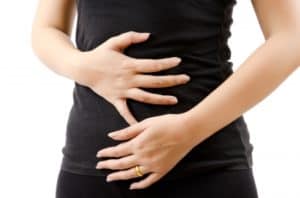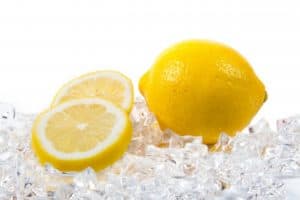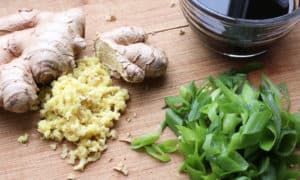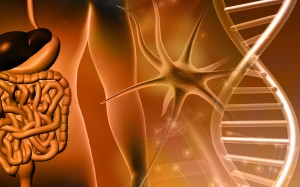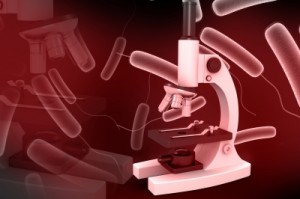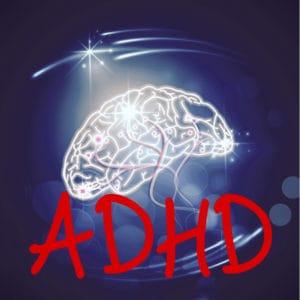 Attention Deficit Hyperactivity Disorder (ADHD) has three types: “inattentive” type, when focus and distractibility are an issue, but there is no hyperactivity, “hyperactive” type, when restlessness and impulsivity are an issue and focus is not as much of an issue, and “combined” when inattentiveness and hyperactivity are both a challenge. ADHD is on the rise in our culture. The number of children diagnosed with ADHD has doubled in less than 10 years. Additionally, 4.2 million kids are on prescription psychostimulants.
Attention Deficit Hyperactivity Disorder (ADHD) has three types: “inattentive” type, when focus and distractibility are an issue, but there is no hyperactivity, “hyperactive” type, when restlessness and impulsivity are an issue and focus is not as much of an issue, and “combined” when inattentiveness and hyperactivity are both a challenge. ADHD is on the rise in our culture. The number of children diagnosed with ADHD has doubled in less than 10 years. Additionally, 4.2 million kids are on prescription psychostimulants.
Some experts, myself included, believe the single biggest factor is lack of proper nutrition. Yet this is not usually addressed, at least not by doctors. Nutrition and sleep are the two pillars of a child’s brain health. These two foundational areas impact everything. They are so fundamental and need to be optimized so that a child’s brain can function at its best.
I want to make one thing clear: I am not anti-medication. Medication can be a very good treatment option for a child with ADHD. But medication alone or medication as the first or only treatment is a tragic missed opportunity. When we optimize a child’s health so his brain can work at it’s best, other secondary treatments, like meds, will have better success. Without addressing nutrition, no one’s brain or body can operate optimally.
For a complicated diagnosis such as ADHD, a comprehensive set of treatments is needed. Below I have outlined many areas of consideration and treatment for a child with ADHD. This is a long post because there are so many considerations. I have tried to be thorough yet brief (the vast amount of this info could easily fill a book, and has!).
Diet:
Overall healthy diet
- Nutrition is so crucial for the body and brain to develop and function. A child needs to get adequate protein, healthy fats, and plenty of fruits and vegetables. Sugars and processed foods need to be limited.
Breakfast
- In addition to maintaining overall healthy nutrition for functioning, there are specific diet choices that can be made to help improve daily symptoms. Sugar and simple starches, like those in cereals, breads and other typical breakfast foods, get digested and absorbed very quickly. This raises a child’s blood sugar and the body’s response is to process and get rid of that blood sugar, leaving a child with LOW blood sugar by mid-morning. As we all know, a person with low blood sugar can become irritable, inattentive and tired, so you can imagine how this affects someone who is already prone to impulsivity or inattentiveness. A good breakfast with plenty of protein is essential. The carbs should be in the form of fruit or dairy or, if need be, whole grains. Looking for breakfast ideas? Click here.
Snacking
- Small frequent snacks are good for both keeping a child’s blood sugar stable and providing ongoing nutrition throughout the day. A snack should not be junk food, candy, cookies, or other nutrition-less foods. A snack should reflect the same standards as a meal: protein, healthy carbs, fruits, vegetables, and healthy fats. Click here for my kid’s snack list.
Water
- Make sure your child has enough water. Dehydration can negatively affect every aspect of the body, especially the brain.
Food sensitivities
- About half of all kids with ADHD suffer from food sensitivities. Food sensitivities are NOT the same as food allergies. An allergy causes an immediate immune system reaction (like those requiring an epi-pen). Sensitivities cause a slow inflammatory response and chronic symptoms. Food sensitivities can be the culprit for symptoms such as skin rashes, fatigue, digestive symptoms, respiratory symptoms, as well as mood and behavior disturbances.
- Cutting out any foods your child is reactive to can improve ADHD.
- An elimination diet, (when you eliminate a specific food in all its forms for one to three months, and then reintroduce it) is the gold standard for figuring out food sensitivities. This elimination can be done for one food at a time, or you can eliminate all the foods that are potential triggers, really calm things down, and then reintroduce one food at a time. This can be complicated, so it is wise to seek professional help.
- The most common food sensitivities are to: gluten, dairy, tree nuts, peanuts, seafood, corn, eggs, and soy.
- There are tests, such as IgG and MRT, for food sensitivities. They are both controversial, but have yielded some amazing results in some cases.
Gut health
- Gut health and behavioral/brain health are linked. The gut-brain axis is a two way street, and the health of one affects the health of the other. If there are unhealthy bacteria or yeast in your child’s gut, those can be causing or worsening their ADHD symptoms.
- If their gut lining isn’t healthy, toxins and waste products from the gut can leak into the body and dramatically affect the brain.
Additives
- There are twenty-four types of food additives found in the food that we eat. There is a lot of controversy about the effect of these artificial chemicals that we consume with every bite of processed food. We don’t know for sure the impact of these chemicals on the growing brain and nervous system but there is some evidence that it is harmful. Most countries (besides the US) do not allow some of these additives in their food supply. Some examples:
- Preservatives
- Artificial colors (Red No. 40 for example) There is research that shows these additives cause hyperactivity. They are stimulating for the brain.
- Artificial sweeteners
- Artificial flavors
Picky eaters:
Picky eating, food aversion, sensory issues, and other eating-related behavioral problems are often present in ADHD. These need to be addressed. They all have the potential to negatively affect growth and development. Seek help from a dietitian and/or sensory specialist.
Vitamin and Mineral Deficiencies:
Almost all children with ADHD have nutrient deficiencies, sometimes more than one. The following are common deficiencies and/or nutrients that have been shown in research to help with ADHD symptoms.
- Magnesium
- Iron
- Zinc
- Vitamin D
- B6 (should be in the form P5P-see below)
- All B vitamins (should be given in their activated form-which are impossible to find in the store, even Whole Foods. The best place to get these is from a health care practitioner who has an account with a high-grade supplement company)
- Focus supplement: I have developed a formula that contains most of these nutrients and more, in the right proportions. And I recommend it to all my clients with ADHD.
Other nutrients and supplements:
- Omega-3 fatty acids, commonly known as fish oil. EPA and DHA are two fatty acids that are scarce in our diet and essential for brain health. There is tons of research on these, suggesting that they can aid in managing Fish oil pills, liquids or chewables can be found in many stores. Fish oil is better than flax seed, which contains ALA and isn’t as readily used by the body as EPA and DHA
- This and other phospholipids are essential for cell membranes and might have a place in the treatment of ADHD. A new product, Vayarin, has phosphatidylserine attached to Omega 3s and has been shown to improve ADHD.
- Gingko Biloba has been shown in research studies to improve focus in kids with ADHD.
- Anti-oxidants naturally occur in fruits and vegetables, or they can be found in supplements. They are crucial for reducing the oxidative stress that is present in people with brain challenges.
- Amino acid precursors to neurotransmitters. Neurotransmitters are the chemicals that the brain uses to communicate. Neurotransmitters are required for thinking and focusing. Many people with ADHD are deficient in the neurotransmitter dopamine. This makes sense as dopamine is needed for focus, attention, and executive functioning. L-tyrosine is an amino acid (single molecule protein) that is the precursor to dopamine in the body. This is a safe, non-medicinal way to balance the brain.
**Both nutrient supplementation and herbal or neurotransmitter supplementation should be done under the supervision of a qualified health care professional.
Tests:
There are several tests that I offer in my practice, which can reveal important information about what’s going on inside the body and therefore aid in targeted individualized treatment.
- Micronutrient test. By doing this test, we can determine which vitamin, mineral, or anti-oxidant deficiencies a child has and therefore need to be supplemented.
- Neurotransmitter Test. This test measures the levels of serotonin, dopamine, norepinephrine, epinephrine, GABA, and glutamate. By discovering which neurotransmitters are higher or lower than expected, we know exactly how much of which amino acids to provide in order to restore balance.
- Genetics Testing can be very illuminating about the genetic factors relating to someone’s health. There are ways to combat or get around genetic roadblocks.
- Heavy Metal Testing to see if a toxicity exists and needs to be treated.
- Food sensitivity testing to determine if someone is reacting to certain
Other lifestyle factors:
- Heavy metal toxicity
- Lead, mercury, and other metals contaminate our soil, seafood, and sometimes our water. These can cause brain issues in susceptible people. Children are naturally susceptible, as their brains are still developing. Furthermore, genetics dictates that some people are worse at detoxifying than others, and may need extra help.
- Exercise:
- Physical activity-we know that exercise is good for the brain, and is very beneficial in helping with ADHD symptoms.
- Yoga has been shown to be beneficial in this population too.
- Martial arts can help with self-control and focus.
- Meditation and mindfulness can be very calming and helpful to improve one’s control over their attention.
- Biofeedback and neurofeedback: this takes another expert and his machinery, but can very helpful to reinforce when a child is focusing.
- Screens
- Limit all screens such as TV viewing, video games and iPad to 30 minutes a day (ideally).
- SLEEP
- Last but not least. Sleep is as foundational as diet. Without the proper amount and quality of sleep, a child simply cannot function optimally. 8-10 hours is usually optimal. Going to bed at the same time every night is a good idea too.
A condition such as ADHD requires a comprehensive and integrated treatment plan. There are many, many areas to work on before, instead, or in addition to treating with medication.
Please use those ‘share’ buttons to share this article on social media-chances are someone you know needs this info!


